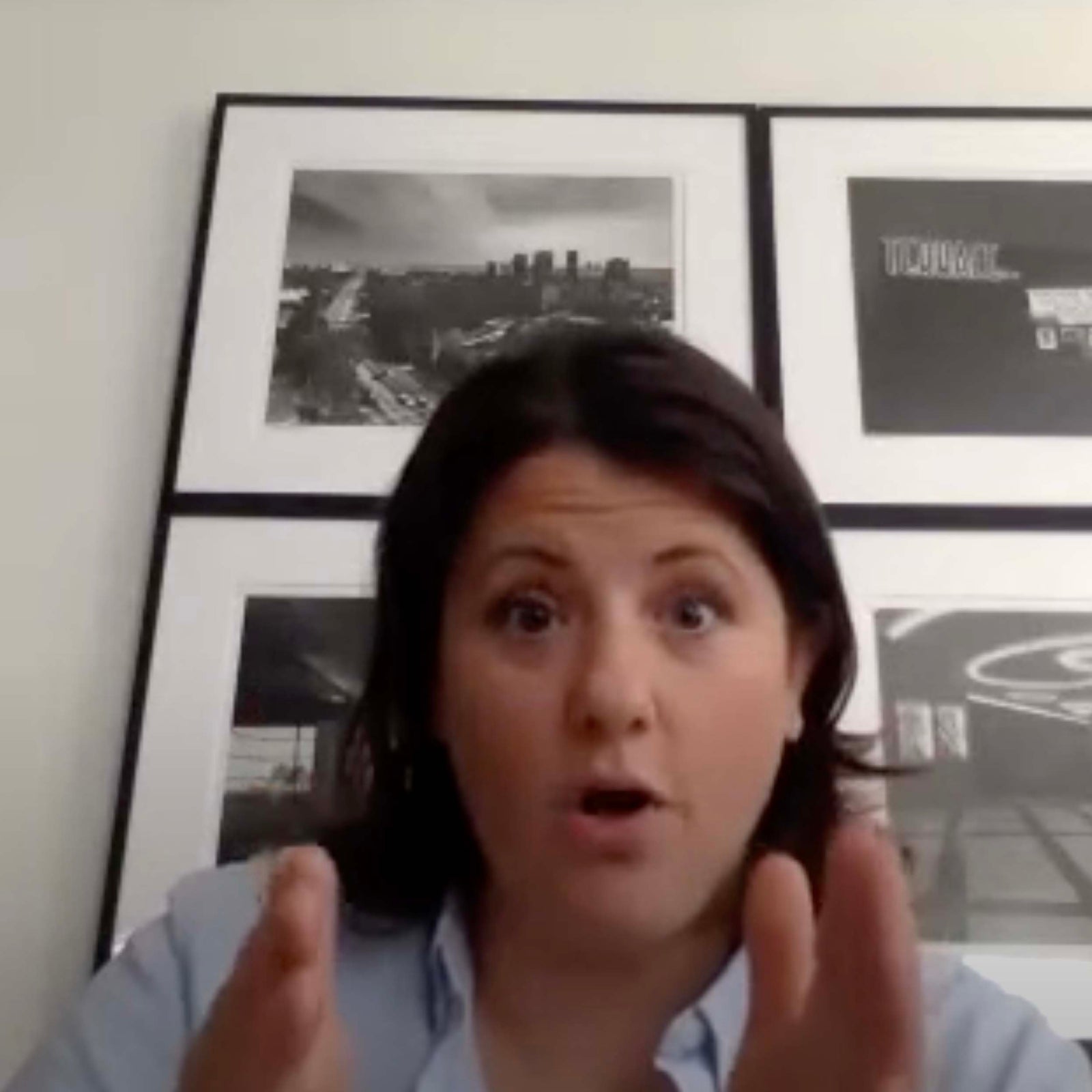Root & Associates and our highly experienced partners go beyond the data feed to explore the meaning behind the buzz. What’s driving positive or negative sentiment? What language are shoppers using? Who are the influencers? What’s behind the trend lines?
As skilled qualitative researchers we dig deep for richer insights. What are the emergent patterns? What does this tell us about shoppers? What do we need to include or be aware of in the next steps of the research?
What are the implications and opportunities and, most importantly, how does this insight help improve consideration, positive differentiation, and sales for your firm?

Remote screen sharing allows us to put product mock-ups, prototypes, scenarios and marketing comps in front of consumers and capture their responses without the need to travel to their location. This is especially effective when looking at how consumers conduct their researching and shopping for products and services.

A new spin on a classic technique, our mobile ethnographic research process improves speed and reduces cost. With an app on their mobile device, consumers go through the task or process being evaluated while their device captures it on video with audio. Researchers evaluate the material without needing to be in the same location. Questions and clarification can be exchanged via the app.

Accompanying consumers as they shop and purchase in the real world is irreplaceable. Observing them while buying real products from real retailers and then debriefing about their experience directly afterwards can uncover incredible insights.

“Get ’em while it’s fresh!” The benefit of geo-targeting is to get insights from people the moment they are finishing their shopping. We know when they hit the showroom and can ping them while they are there are leaving. Frequently we get their input while they are still sitting in the dealerships parking lot when recall and emotion is highest.
In-depth interviews (IDIs) are one-on-one discussions that offer a level of insight into a respondents thoughts and reactions that can’t be achieved through group discussions. Depth interviews also give interviewers the chance to get reactions from respondents without them being affected by the responses of others in the group. They can also be held in a participant’s home, helping them be more comfortable in the discussion.
Depth Interviews are useful for:
A focus group is made up of six to 10 respondents who have been brought together to have a discussion about a specific product or services. A representative of the organization will conduct the focus group, as well as guide the talking points to ensure that it’s productive and insightful.
Focus groups are useful for:
Mini groups are usually made up of four to six respondents having a moderated discussion. They are essentially a smaller version of a focus group, and the smaller group size allows the respondents to go into more depth about their reaction to the product or service. They are also useful for discussions about products or services where the pool of potential participants is limited.
Mini groups are useful for:
A decision pair is made up of two people, usually joint decision makers, being interviewed together. This can happen in-person or over webcam, and it can be done in-home or in a retail environment. Decision pairs are a valuable way to see how two people interact when trying to make a decision about a purchase and it can yield rich insights into not only purchasing decisions, but reasoning, bias, and purchasing habits.
Decision pairs are useful for:
Peer parties are similar to focus groups in that they are moderated group discussions, but they are different in some key ways. They usually take place in a participant’s home or other casual setting, like a bar or restaurant where food and drinks are available, and are typically made up of a group of friends, as opposed to strangers. The informal atmosphere and relationships between participants encourage honesty and openness.
Peer parties are useful for:
A webcam focus group functions similarly to an in-person focus group, but participants do not have to be in one central location to participate. Interviewees can see the moderator and each other on the screen and interact with each other as if they were in-person. Additionally, products can be sent to the participants ahead of time if they need to interact with the product.
Webcam focus groups are useful for:
Bulletin board groups provide an anonymous and simple way to gather feedback from participants in online message boards. They also allow participants to interact with each other in addition to the moderator. Additionally, they allow participants from different locations and who may be too busy to participate in an in-person focus group to provide their insights.
Bulletin board groups are useful for:
Short-term online communities can be thought of as a temporary social networking site. Participants can view and comment on posts from the moderator and other participants, post pictures and videos, and complete homework assignments during the span of the community. They allow the research team to refine a product or service and continue to receive feedback on it from participants.
Short-term communities are useful for:
Webcam communication checks are an ideal way of getting a participant’s reaction to a video, website, storyboard, or other visual stimulus. Like webcam interviews, they allow researchers to interact with people all over the country without having to travel, and they allow consumers to participate from the their own home, where they are more comfortable and willing to give their insights and opinions.
Webcam communication checks are useful for:
QuickQual is a method of researching that involves faster participant recruitment, resulting in a shorter turnaround time and faster insights—most projects take a week or less to finish. For clients that are under pressure to get quick results, QuickQual will help them achieve what they need to while still gaining quality insights.
QuickQual is useful for:
Webcam interviews are similar to in-person interviews, but have some distinct advantages. First, they can be conducted with participants across the country, allowing you to be more selective with whom you choose to participate. They also provide an up-close view of the participant’s facial expressions and allow you to record and capture images of them. Prompts can also easily be given to the interviewer from the client team through a messenger window.
Webcam interviews are useful for:
Geo-stories are interviews that happen over the phone while the participant is executing the activity they’re being interviewed about, whether it’s shopping in the grocery store or walking into a dealership. Pre-qualified participants fill out a survey when they reach the specified location and are contacted by an interviewer. Geo-stories give insight into the participants’ thoughts at the most critical times.
Geo-stories are useful for:
StreetTalk diaries allow participants to call, text, or email their unfiltered thoughts while they’re interacting with the product or service being researched. Once their feedback has been reviewed, they’re contacted for follow-up questions that researchers might have and asked more in-depth questions. This method allows researchers to capture both in-the-moment thoughts and opinions and further developed thoughts about the product or service.
StreetTalk diaries are useful for:
Selfie videos are taken by participants to record their thoughts and reactions to a product or service. Afterwards, they’re submitted to researchers who can view the video and extrapolate information from their thoughts and facial expressions. Selfie videos are sometimes used as a stand-alone method, but are more often used in conjunction with other research methods as an enhancement.
Selfie videos are useful for:
In-home ethnographic interviews involve an interviewer watching a consumer use a product in their home. As opposed to simply asking questions and discussing behaviors, the interviewer can observe the consumer using the product in their home and get unique insight into the uses, and problems, associated with the product.
In-home ethnographic interviews are useful for:
On-site ethnographic interviews take place anywhere that the product being researched is used or purchased. While the purpose is the same as an in-home interview, on-site interviews are used for products whose use isn’t restricted to the home. Interviewers might go to the store (i.e., on a shopalong), to the park, on a car ride, or any number of other places with an interviewee.
On-site ethnographic interviews are useful for:
Shopalongs are a valuable way for interviewers to see a consumer’s behavior in the context of the retail environment, as opposed to having the consumer recount their thoughts and decisions in an interview or focus group. Shoppers can be recruited beforehand or approached in-store by an interviewer, who asks questions to learn about the shopper’s decisions.
Shopalongs are useful for:
Traditionally, an in-home usage test (IHUT) is a quantitative research method, but IHUTnographies provide qualitative data by following a less structured interview format to capture participants’ thoughts, feelings, and reactions while they are using a product or service in their home. Participants can communicate with interviewers through video chat, a short-term community, a video diary, and more.
IHUTnographies are useful for:
Video diaries are a video record of a participant’s thoughts, reactions, and feelings about a product recorded over a period of time. Participants usually develop more of a rapport with their interviewer, and in turn, the interviewer gains a better understanding of the participant and their reactions. Video diaries can give researchers more insight into consumer decisions than some other interview formats.
Video diaries are useful for:
Immersion involves a series of research activities used together to gain a deep and thorough understanding of one part of a participant’s life. It can give researchers a good view of longer purchasing processes or of products or services that are used over time. It also provides researchers with additional context for the use of a product with which to evaluate a participant’s reactions and thoughts.
Immersion is useful for:
Social media analysis takes advantage of a rich source of information: social media users’ posts. By using automated sentiment analysis, research teams can learn about how users are talking about their brand, their competitors’ brands, or a specific topic that is important to them. Additionally, social media analysis has the benefit of not requiring participation from a live person.
Social media analysis is useful for:
MineSights meta analysis using sources of information that already exist within a company—such as internal memos, studies, research reports, and emails from clients—and looks for patterns and connections that you may not have seen yet. It can also reveal new information about topics that you haven’t looked deeply into yet and allows researchers to look at your data with fresh eyes.
MineSights Meta-Analysis is useful for:
Idea generation is a technique for helping to create a backlog of ideas for new products, services, or ideas for business opportunities. It can be done with a client’s internal teams or with consumers of any age. The setting is designed to encourage participants to think about things from a new perspective.
Idea generation is useful for:
Team Navigation sessions are used to take information created from idea generation or research and then compare it against the client’s business objectives and what they hoped to gain from their qualitative research. It’s also an opportunity for clients to identify large themes and insights gained from research and turn them into concepts that can be tested with focus groups and other research methods.
Team Navigation is useful for: